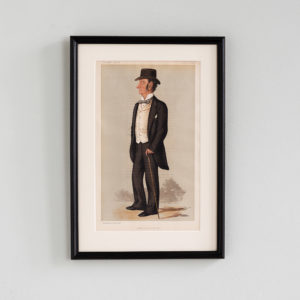474 items found
Page 3 of 5
-
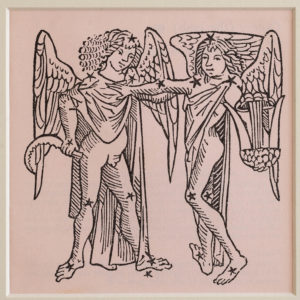
Poeticon Astronomicon e De Magnis Copiunctionibus – Gemini,
£195 eachPoeticon Astronomicon e De Magnis Copiunctionibus – Gemini,
Poeticon Astronomicon was originally published in Venice, 1485 whilst e De Magnis Copiunctionibus was published in Augsburg 1489. The descriptions come from William Lilly of London in 1647.£195 each -
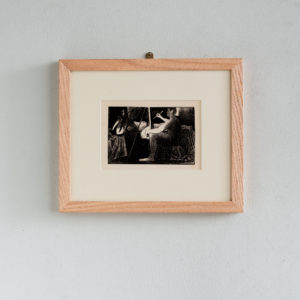
Picasso, lithographs from 1930
£195Picasso, lithographs from 1930
Produced for 'Editions des Chroniques du Jour' an important early work on Picasso.£195 -
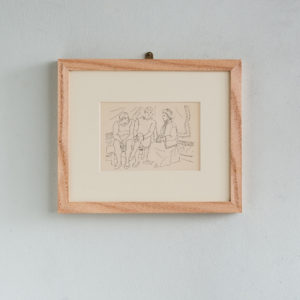
Picasso, lithographs from 1930
£195Picasso, lithographs from 1930
Produced for 'Editions des Chroniques du Jour' an important early work on Picasso.£195 -
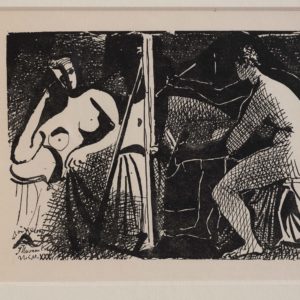
Picasso, lithographs from 1930
£195Picasso, lithographs from 1930
Produced for 'Editions des Chroniques du Jour' an important early work on Picasso.£195 -
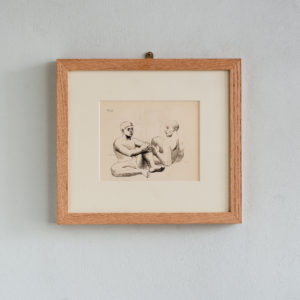
Picasso, lithographs from 1930
£195Picasso, lithographs from 1930
Produced for 'Editions des Chroniques du Jour' an important early work on Picasso.£195 -
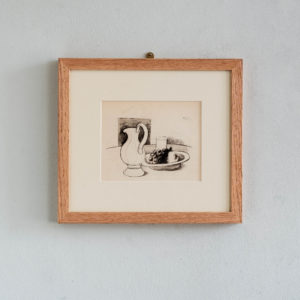
Picasso, lithographs from 1930
£195Picasso, lithographs from 1930
Produced for 'Editions des Chroniques du Jour' an important early work on Picasso.£195 -
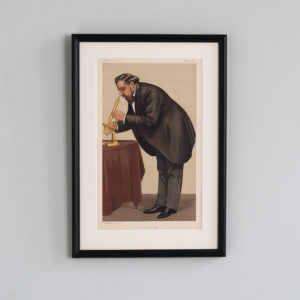
Mr. Frank Crisp,
£195Mr. Frank Crisp,
Framed Chromolithograph by Spy (Leslie Ward) depicting Sir Frank Crisp, 1st Baronet. Lawyer, forensic scientist, microscopist and horticulturalist. The owner of Friar Park, Henley-on-Thames, lately the residence of the Beatle George Harrison, he also drew up the contract for the cutting of the Cullinan Diamond in Amsterdam by Jospeh Asscher in 1893.£195 -
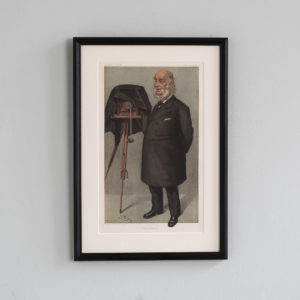
East Birmingham,
£195East Birmingham,
Framed Chromolithograph by Spy (Leslie Ward) depicting Sir John Benjamin Stone, Conservative politician, pioneer of photography, MP for Birmingham East and first Mayor of Sutton Coldfield. He was a prolific early documentary photographer and undertook photographic expeditions to Spain, Norway, Japan and Brazil where he captured the 1893 total solar eclipse. The National Portrait Gallery holds 62 of his photographic portraits and he was appointed the official photographer of the coronation of George V in 1911.£195 -
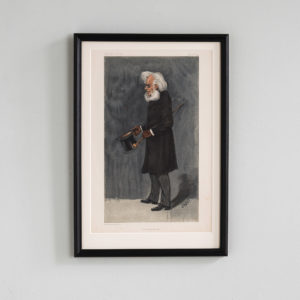
The Master Builder,
£195The Master Builder,
Framed chromolithograph by SNAPP picturing the Norwegian playwright and theatre director Henrik Ibsen, 'the father of realism' in the dramatic arts, writer of 'A Dolls House', 'Peer Gynt' and 'The Master Builder', three time Nobel Prize nominee.£195 -
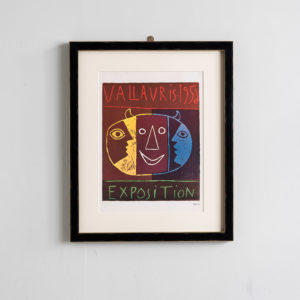
The Posters of Picasso,
£195 eachThe Posters of Picasso,
Original lithographs showing the output of Picasso for his exhibition posters. Mounted and framed black.£195 each -
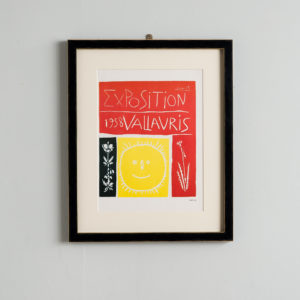
The Posters of Picasso,
£195 eachThe Posters of Picasso,
Original lithographs showing the output of Picasso for his exhibition posters. Mounted and framed black.£195 each -
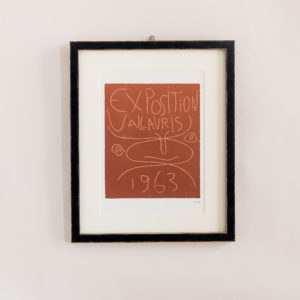
The Posters of Picasso
£195 eachThe Posters of Picasso
Original lithographs showing the output of Picasso for his exhibition posters. Mounted and framed black.£195 each -
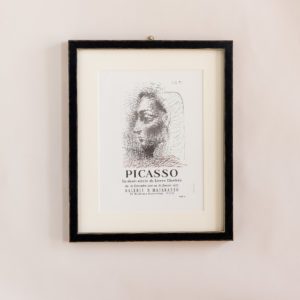
The Posters of Picasso
£195 eachThe Posters of Picasso
Original lithographs showing the output of Picasso for his exhibition posters. Mounted and framed black.£195 each -
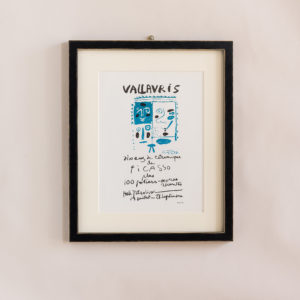
The Posters of Picasso
£195 eachThe Posters of Picasso
Original lithographs showing the output of Picasso for his exhibition posters. Mounted and framed black.£195 each -
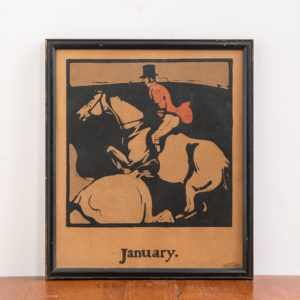
William Nicholson, Sports as Months of the Year
£195 -
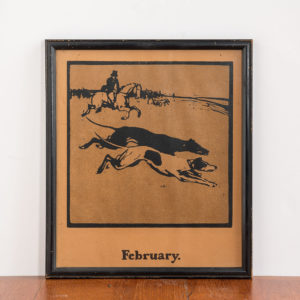
William Nicholson, Sports as Months of the Year
£195 -
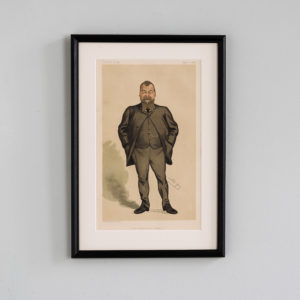
The Working Man Member,
£190The Working Man Member,
Framed chromolithograph picturing Mr Henry Broadhurst MP. A leading early British trade-unionist, Mr Broadhurst worked his way up from a stonemason's apprentice to become leader of the Labour Representation League, a forerunner of the Labour Party. From working as a mason on the clock tower of the rebuilt Palace of Westminster he eventually secured a seat in the House of Commons as MP, firstly for Stoke-on-Trent, as well as chairmanship of the forerunner of the TUC. Appointed Under-Secretary of State for the Home Department in the Liberal government he became the first person from a working-class or labour movement background to hold a ministerial post.£190 -
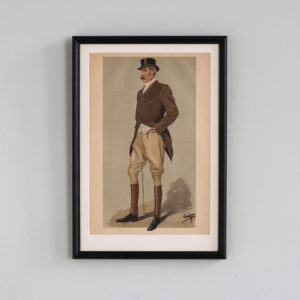
A hard rider,
£190A hard rider,
Framed Chromolithograph by SPY (Sir Leslie Ward) picturing 'Captain' David Longfield Beatty, infamous soldier and amateur sportsman of the late Victorian period. An Anglo-Irish horse dealer and trainer from County Wexford, Captain Beatty was considered a violent and unpleasant bully. After cuckolding a brother Officer in the 4th Hussars he was dismissed from his regiment although he continued to be referred to as 'Captain' - a rank he had never achieved and held only in an honorary capacity. His natural son, David Richard Beatty went on to become Admiral of the Fleet and the 1st Earl Beatty, Viscount Borodale and Baron Beatty of the North Sea and Brooksby sometimes described as 'Britain's last naval hero'.£190 -
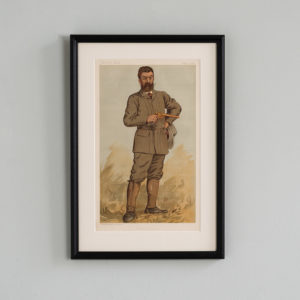
The Record Revolver Shot,
£190The Record Revolver Shot,
A framed chromolithograph by SPY (Sir Leslie Ward) picturing Mr Walter Winans, American marksman, hunter, horsebreeder, sculptor and painter. A twice Olympic shooting gold medalist, he also won the gold medal for sculpture at the Stockholm Arts Competition in 1912 for his equestrian bronze 'An American Trotter'.£190 -
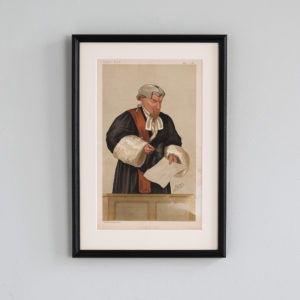
Stay, Please,
£190Stay, Please,
A framed chromolithograph picturing Mr Justice William Ventris Field, Baron Field of Wakenham. Queen's Council, later Queen's Bench, he oversaw the reorganisation of the court system following the Judicature Act of 1881 which established Judges Chambers in England and served (especially in the court of Chancery) to make trial without a jury the normal mode of trial, except in certain instances. In 1890, he retired from the bench and was raised to the peerage as Baron Field, of Wakenham in the County of Surrey, on 10 April 1890. He had been sworn of the Privy Council earlier the same year.£190 -
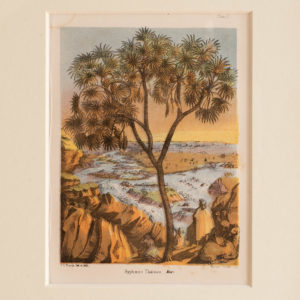
Popular History of the Palms and their Allies – Hyphaene Thebaica
£180 eachPopular History of the Palms and their Allies – Hyphaene Thebaica
Based on the work of Berthold Seemann ,was a botanist who made his name when he was appointed naturalist (on the recommendation of W J Hooker) to HMS Herald for the Kellett voyage of exploration to the American West Coast and Pacific.£180 each -
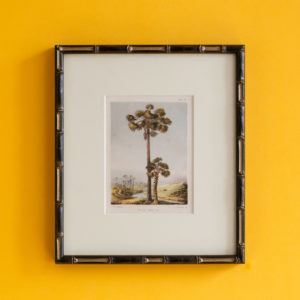
Popular History of the Palms and their Allies – Mauritia vinifera
£180 eachPopular History of the Palms and their Allies – Mauritia vinifera
Based on the work of Berthold Seemann ,was a botanist who made his name when he was appointed naturalist (on the recommendation of W J Hooker) to HMS Herald for the Kellett voyage of exploration to the American West Coast and Pacific.£180 each -
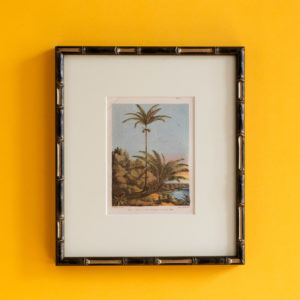
Popular History of the Palms and their Allies – Elaeis melanococca & Iriartea exorrhiza
£180 eachPopular History of the Palms and their Allies – Elaeis melanococca & Iriartea exorrhiza
Based on the work of Berthold Seemann ,was a botanist who made his name when he was appointed naturalist (on the recommendation of W J Hooker) to HMS Herald for the Kellett voyage of exploration to the American West Coast and Pacific.£180 each -
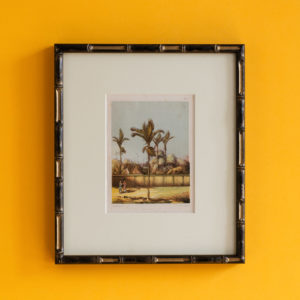
Popular History of the Palms and their Allies – Areca catechu
£180 eachPopular History of the Palms and their Allies – Areca catechu
Based on the work of Berthold Seemann ,was a botanist who made his name when he was appointed naturalist (on the recommendation of W J Hooker) to HMS Herald for the Kellett voyage of exploration to the American West Coast and Pacific.£180 each -

Popular History of the Palms and their Allies – Acrocomia Mexicana & Chamaedorea Schiedeana
£180 eachPopular History of the Palms and their Allies – Acrocomia Mexicana & Chamaedorea Schiedeana
Based on the work of Berthold Seemann ,was a botanist who made his name when he was appointed naturalist (on the recommendation of W J Hooker) to HMS Herald for the Kellett voyage of exploration to the American West Coast and Pacific.£180 each -
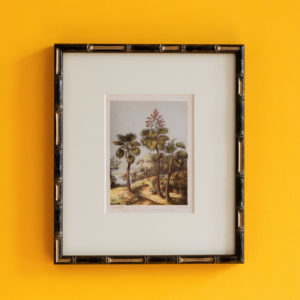
Popular History of the Palms and their Allies – Borassus flabelliformis & Corypha umbraculifera
£180 eachPopular History of the Palms and their Allies – Borassus flabelliformis & Corypha umbraculifera
Based on the work of Berthold Seemann ,was a botanist who made his name when he was appointed naturalist (on the recommendation of W J Hooker) to HMS Herald for the Kellett voyage of exploration to the American West Coast and Pacific.£180 each -
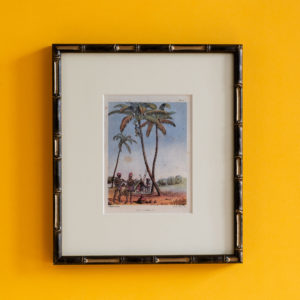
Popular History of the Palms and their Allies – Cocos nucifera
£180 eachPopular History of the Palms and their Allies – Cocos nucifera
Based on the work of Berthold Seemann ,was a botanist who made his name when he was appointed naturalist (on the recommendation of W J Hooker) to HMS Herald for the Kellett voyage of exploration to the American West Coast and Pacific.£180 each -
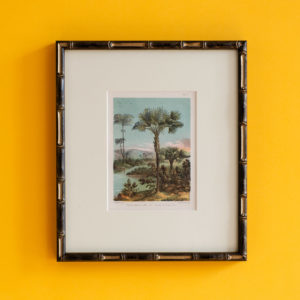
Popular History of the Palms and their Allies – Oreodoxa oleracea & Thrinax multiflora
£180 eachPopular History of the Palms and their Allies – Oreodoxa oleracea & Thrinax multiflora
Based on the work of Berthold Seemann ,was a botanist who made his name when he was appointed naturalist (on the recommendation of W J Hooker) to HMS Herald for the Kellett voyage of exploration to the American West Coast and Pacific.£180 each -
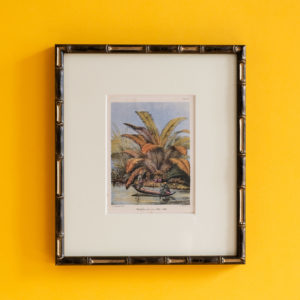
Popular History of the Palms and their Allies – Phytelephas macrocarpa
£180 eachPopular History of the Palms and their Allies – Phytelephas macrocarpa
Based on the work of Berthold Seemann ,was a botanist who made his name when he was appointed naturalist (on the recommendation of W J Hooker) to HMS Herald for the Kellett voyage of exploration to the American West Coast and Pacific.£180 each -
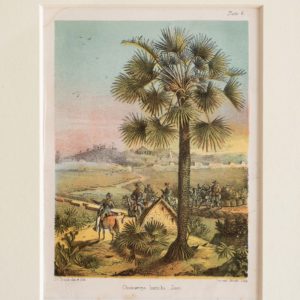
Popular History of the Palms and their Allies – Chamaerops humilis
£180 eachPopular History of the Palms and their Allies – Chamaerops humilis
Based on the work of Berthold Seemann ,was a botanist who made his name when he was appointed naturalist (on the recommendation of W J Hooker) to HMS Herald for the Kellett voyage of exploration to the American West Coast and Pacific.£180 each -
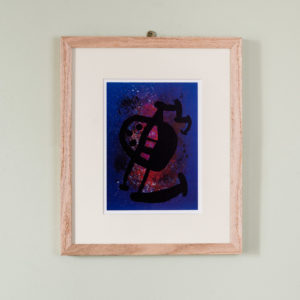
Joan Miró, lithographs
£180Joan Miró, lithographs
In 1967, printer Robert Dutrou introduced Joan Miró to a new printmaking technique: Silicon carbide engraving. More commonly known as carborundum, this technique became the artist’s final technical development in his graphic work.£180 -
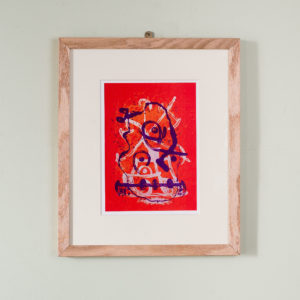
Joan Miró, lithographs
£180Joan Miró, lithographs
In 1967, printer Robert Dutrou introduced Joan Miró to a new printmaking technique: Silicon carbide engraving. More commonly known as carborundum, this technique became the artist’s final technical development in his graphic work.£180 -
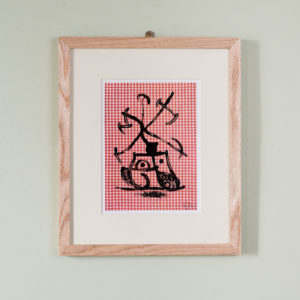
Joan Miró, lithographs
£180Joan Miró, lithographs
In 1967, printer Robert Dutrou introduced Joan Miró to a new printmaking technique: Silicon carbide engraving. More commonly known as carborundum, this technique became the artist’s final technical development in his graphic work.£180 -
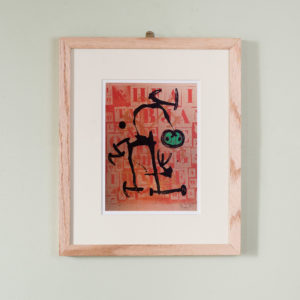
Joan Miró, lithographs
£180Joan Miró, lithographs
In 1967, printer Robert Dutrou introduced Joan Miró to a new printmaking technique: Silicon carbide engraving. More commonly known as carborundum, this technique became the artist’s final technical development in his graphic work.£180 -
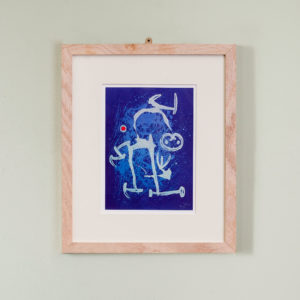
Joan Miró, lithographs
£180Joan Miró, lithographs
In 1967, printer Robert Dutrou introduced Joan Miró to a new printmaking technique: Silicon carbide engraving. More commonly known as carborundum, this technique became the artist’s final technical development in his graphic work.£180 -
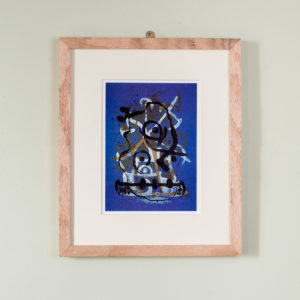
Joan Miró, lithographs
£180Joan Miró, lithographs
In 1967, printer Robert Dutrou introduced Joan Miró to a new printmaking technique: Silicon carbide engraving. More commonly known as carborundum, this technique became the artist’s final technical development in his graphic work.£180 -
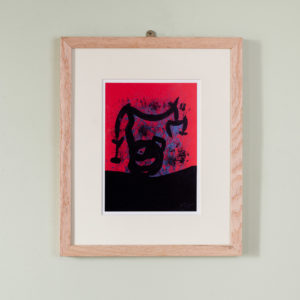
Joan Miró, lithographs
£180Joan Miró, lithographs
In 1967, printer Robert Dutrou introduced Joan Miró to a new printmaking technique: Silicon carbide engraving. More commonly known as carborundum, this technique became the artist’s final technical development in his graphic work.£180 -
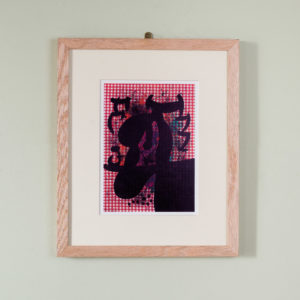
Joan Miró, lithographs
£180Joan Miró, lithographs
In 1967, printer Robert Dutrou introduced Joan Miró to a new printmaking technique: Silicon carbide engraving. More commonly known as carborundum, this technique became the artist’s final technical development in his graphic work.£180 -
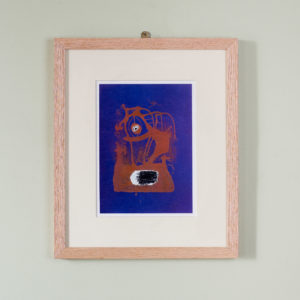
Joan Miró, lithographs
£180Joan Miró, lithographs
In 1967, printer Robert Dutrou introduced Joan Miró to a new printmaking technique: Silicon carbide engraving. More commonly known as carborundum, this technique became the artist’s final technical development in his graphic work.£180 -
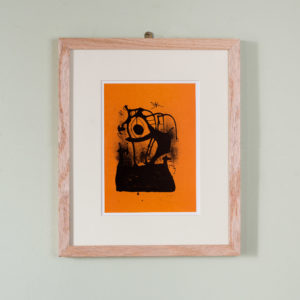
Joan Miró, lithographs
£180Joan Miró, lithographs
In 1967, printer Robert Dutrou introduced Joan Miró to a new printmaking technique: Silicon carbide engraving. More commonly known as carborundum, this technique became the artist’s final technical development in his graphic work.£180 -

Joan Miró, lithographs
£180Joan Miró, lithographs
In 1967, printer Robert Dutrou introduced Joan Miró to a new printmaking technique: Silicon carbide engraving. More commonly known as carborundum, this technique became the artist’s final technical development in his graphic work.£180 -
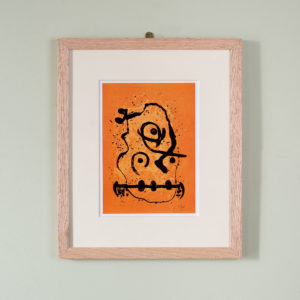
Joan Miró, lithographs
£180Joan Miró, lithographs
In 1967, printer Robert Dutrou introduced Joan Miró to a new printmaking technique: Silicon carbide engraving. More commonly known as carborundum, this technique became the artist’s final technical development in his graphic work.£180 -
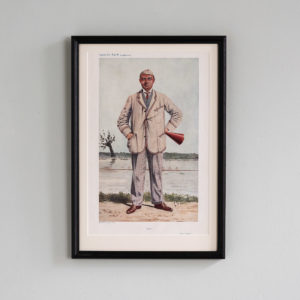
Bill,
£180Bill,
A framed chromolithograph by ELF picturing Robert Henry Foster, lawyer, author, poet, oarsmen and pioneering Romano-British archaeologist. His excavations at Roman Corbridge on Hadrian's Wall were seminal in the fledgling field of British archaeology. He wrote widely about Hadrian's Wall and the Roman presence in his native Northumberland. A keen oarsman, he rowed in the first boat of his college's Lady Margaret Boat Club and in the crew sent to Henley in 1888, winning both the Thames cup and Ladies plate. He later became joint secretary of the Thames Rowing Club in 1892. Starting out with a legal career in mind, he was called to the Bar in 1892, having been McMahon Law Student the year before. However, his writing soon took precedence, to be joined by his archaeological interests.£180 -
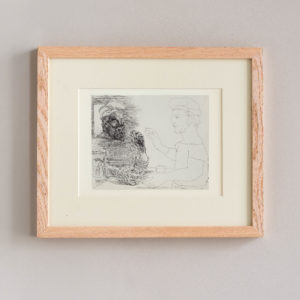
Picasso, Vollard Suite, 1956. c. May 1933.
£175 eachPicasso, Vollard Suite, 1956. c. May 1933.
Lithographs, published 1956 based on Picasso's work, produced from 1930-1937 for the art dealer Ambroise Vollard. Framed in plain oak with cream mounts. c. May 1933. Two Catalan Men£175 each -
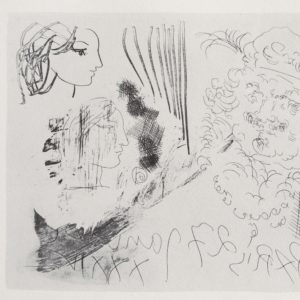
Picasso, Vollard Suite, 1956. Paris, January 27, 1934.
£175 eachPicasso, Vollard Suite, 1956. Paris, January 27, 1934.
Lithographs, published 1956 based on Picasso's work, produced from 1930-1937 for the art dealer Ambroise Vollard. Framed in plain oak with cream mounts. Paris, January 27, 1934. Head of Rembrandt and Heads of Three Girls£175 each -
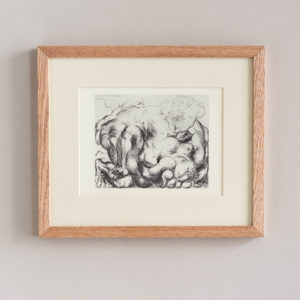
Picasso, Vollard Suite, 1956. Boisgeloup, April 23, 1933.
£175 eachPicasso, Vollard Suite, 1956. Boisgeloup, April 23, 1933.
Lithographs, published 1956 based on Picasso's work, produced from 1930-1937 for the art dealer Ambroise Vollard. Framed in plain oak with cream mounts. Boisgeloup, April 23, 1933. Embrace£175 each -
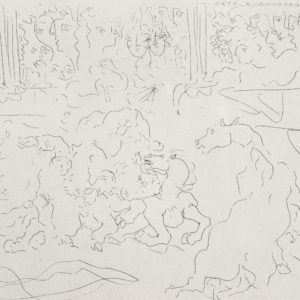
Picasso, Vollard Suite, 1956. Paris, November 7, 1933.
£175 eachPicasso, Vollard Suite, 1956. Paris, November 7, 1933.
Lithographs, published 1956 based on Picasso's work, produced from 1930-1937 for the art dealer Ambroise Vollard. Framed in plain oak with cream mounts. Paris, November 7, 1933. Bullfight I£175 each -
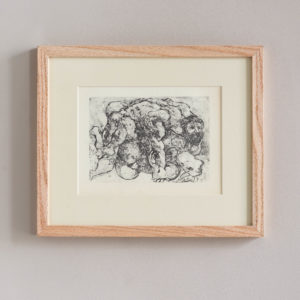
Picasso, Vollard Suite, 1956. Paris, November 2, 1933.
£175 eachPicasso, Vollard Suite, 1956. Paris, November 2, 1933.
Lithographs, published 1956 based on Picasso's work, produced from 1930-1937 for the art dealer Ambroise Vollard. Framed in plain oak with cream mounts. Paris, November 2, 1933. Embrace£175 each -
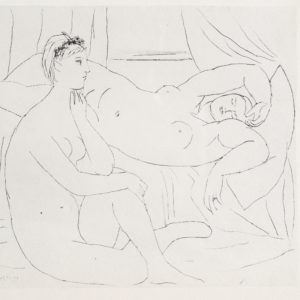
Picasso, Vollard Suite, 1956.
£175 eachPicasso, Vollard Suite, 1956.
Lithographs, published 1956 based on Picasso's work, produced from 1930-1937 for the art dealer Ambroise Vollard. Framed in plain oak with cream mounts. 1931. Two Nudes Resting.£175 each -
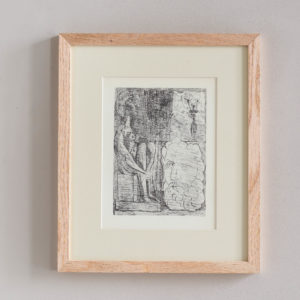
Picasso, Vollard Suite, 1956. Paris, May 5, 1933.
£175 eachPicasso, Vollard Suite, 1956. Paris, May 5, 1933.
Lithographs, published 1956 based on Picasso's work, produced from 1930-1937 for the art dealer Ambroise Vollard. Framed in plain oak with cream mounts. Paris, May 5, 1933. Sculpture of Seated Nude, Sculptured Head, and Vase of Flowers.£175 each -
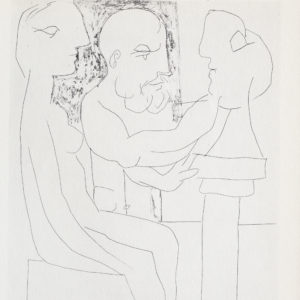
Picasso, Vollard Suite, 1956. Paris, March 25, 1933,
£175 eachPicasso, Vollard Suite, 1956. Paris, March 25, 1933,
Lithographs, published 1956 based on Picasso's work, produced from 1930-1937 for the art dealer Ambroise Vollard. Framed in plain oak with cream mounts. Paris, March 25, 1933. Sculptor Working from a Model.£175 each -
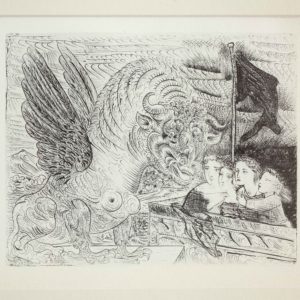
Picasso, Vollard Suite, 1956. c. May 1933.
£175 eachPicasso, Vollard Suite, 1956. c. May 1933.
Lithographs, published 1956 based on Picasso's work, produced from 1930-1937 for the art dealer Ambroise Vollard. Framed in plain oak with cream mounts. c. May 1933. Four Children Viewing a Monster.£175 each -
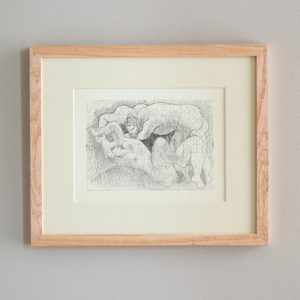
Picasso, Vollard Suite, 1956.
£175 eachPicasso, Vollard Suite, 1956.
Lithographs, published 1956 based on Picasso's work, produced from 1930-1937 for the art dealer Ambroise Vollard. Framed in plain oak with cream mounts. 1931. The Rape£175 each -
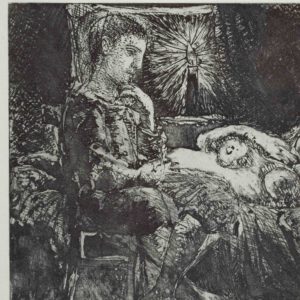
Picasso, Vollard Suite, 1956. c. 1935.
£175 eachPicasso, Vollard Suite, 1956. c. 1935.
Lithographs, published 1956 based on Picasso's work, produced from 1930-1937 for the art dealer Ambroise Vollard. Framed in plain oak with cream mounts. c. 1935. Boy Watching over Sleeping Woman by Candlelight.£175 each -
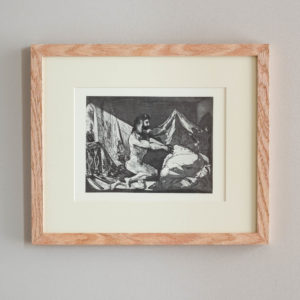
Picasso, Vollard Suite, 1956. June 12, 1936.
£175 eachPicasso, Vollard Suite, 1956. June 12, 1936.
Lithographs, published 1956 based on Picasso's work, produced from 1930-1937 for the art dealer Ambroise Vollard. Framed in plain oak with cream mounts. June 12, 1936. Satyr and Sleeping Woman.£175 each -
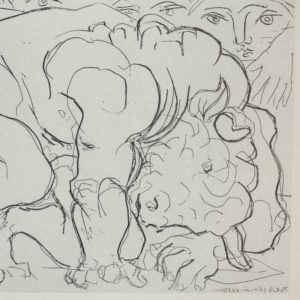
Picasso, Vollard Suite, 1956. Paris, May 26, 1933.
£175 eachPicasso, Vollard Suite, 1956. Paris, May 26, 1933.
Lithographs, published 1956 based on Picasso's work, produced from 1930-1937 for the art dealer Ambroise Vollard. Framed in plain oak with cream mounts. Paris, May 26, 1933. Dying Minotaur.£175 each -
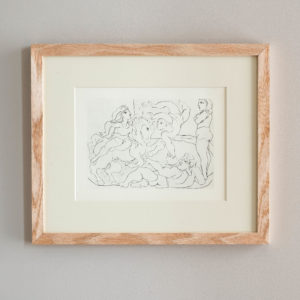
Picasso, Vollard Suite, 1956. Paris, November 11, 1933.
£175 eachPicasso, Vollard Suite, 1956. Paris, November 11, 1933.
Lithographs, published 1956 based on Picasso's work, produced from 1930-1937 for the art dealer Ambroise Vollard. Framed in plain oak with cream mounts. Paris, November 11, 1933. Acrobats with a Horse.£175 each -
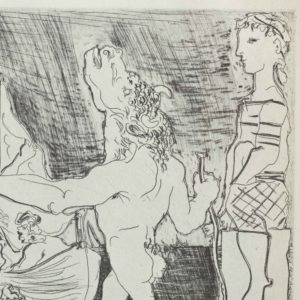
Picasso, Vollard Suite, 1956. Paris, October 23, 1934.
£175 eachPicasso, Vollard Suite, 1956. Paris, October 23, 1934.
Lithographs, published 1956 based on Picasso's work, produced from 1930-1937 for the art dealer Ambroise Vollard. Framed in plain oak with cream mounts. Paris, October 23, 1934. Blind Minotaur Led through the Night by Girl with Dove.£175 each -
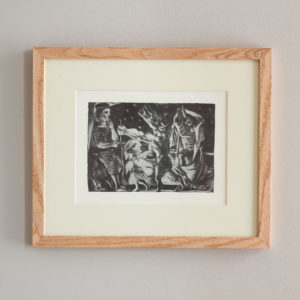
Picasso, Vollard Suite, 1956. c. 1935.
£175 eachPicasso, Vollard Suite, 1956. c. 1935.
Lithographs, published 1956 based on Picasso's work, produced from 1930-1937 for the art dealer Ambroise Vollard. Framed in plain oak with cream mounts. c, 1935. Blind Minotaur Led through the Night by Girl with Fluttering Dove.£175 each -
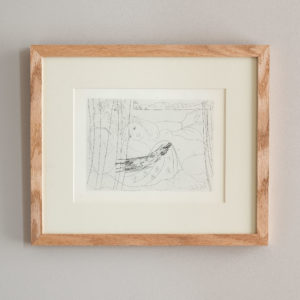
Picasso, Vollard Suite, 1956. Paris, June 16, 1933
£175 eachPicasso, Vollard Suite, 1956. Paris, June 16, 1933
Lithographs, published 1956 based on Picasso's work, produced from 1930-1937 for the art dealer Ambroise Vollard. Framed in plain oak with cream mounts. Paris, June 16, 1933. Minotaur with Girl in His Arms£175 each -
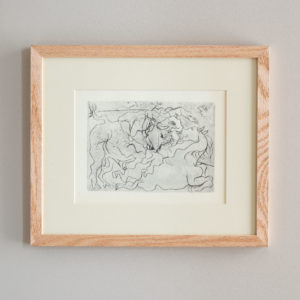
Picasso, Vollard Suite, 1956. Paris, November 8, 1933.
£175 eachPicasso, Vollard Suite, 1956. Paris, November 8, 1933.
Lithographs, published 1956 based on Picasso's work, produced from 1930-1937 for the art dealer Ambroise Vollard. Framed in plain oak with cream mounts. Paris, November 8, 1933. Bullfight II£175 each -
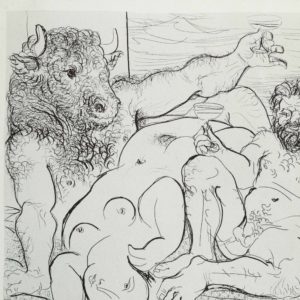
Picasso, Vollard Suite, 1956. Paris, May 18, 1933.
£175 eachPicasso, Vollard Suite, 1956. Paris, May 18, 1933.
Lithographs, published 1956 based on Picasso's work, produced from 1930-1937 for the art dealer Ambroise Vollard. Framed in plain oak with cream mounts. Paris, May 18, 1933. Drinking Minotaur and Sculptor with Two Models£175 each -
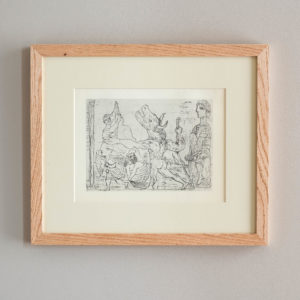
Picasso, Vollard Suite, 1956. c. October 1934.
£175 eachPicasso, Vollard Suite, 1956. c. October 1934.
Lithographs, published 1956 based on Picasso's work, produced from 1930-1937 for the art dealer Ambroise Vollard. Framed in plain oak with cream mounts. c. October 1934. Blind Minotaur Led by Girl with Fluttering Dove.£175 each -
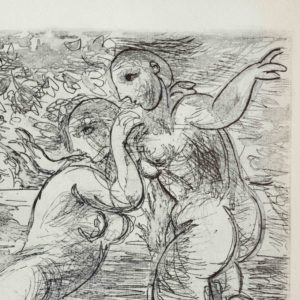
Picasso, Vollard Suite, 1956. Paris, May 22, 1933.
£175 eachPicasso, Vollard Suite, 1956. Paris, May 22, 1933.
Lithographs, published 1956 based on Picasso's work, produced from 1930-1937 for the art dealer Ambroise Vollard. Framed in plain oak with cream mounts. Paris, May 22, 1933. Two Nudes Bathing. At left, Sculptured Head and Head of Spectator.£175 each -
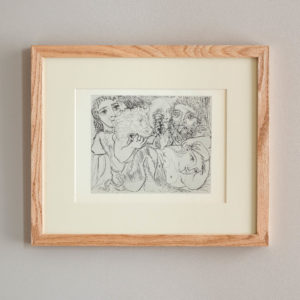
Picasso, Vollard Suite, 1956. Boisgeloup, June 18, 1933.
£175 eachPicasso, Vollard Suite, 1956. Boisgeloup, June 18, 1933.
Lithographs, published 1956 based on Picasso's work, produced from 1930-1937 for the art dealer Ambroise Vollard. Framed in plain oak with cream mounts. Boisgeloup, June 18, 1933. Minotaur, Drinking Sculptor, and Three Models.£175 each -
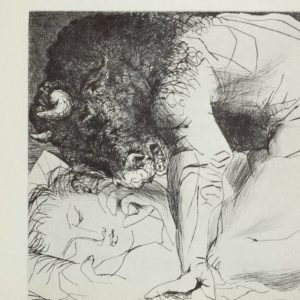
Picasso, Vollard Suite, 1956. Boisgeloup, June 18, 1933.
£175 eachPicasso, Vollard Suite, 1956. Boisgeloup, June 18, 1933.
Lithographs, published 1956 based on Picasso's work, produced from 1930-1937 for the art dealer Ambroise Vollard. Framed in plain oak with cream mounts. Boisgeloup, June 18, 1933. Minotaur over Sleeping Girl.£175 each -
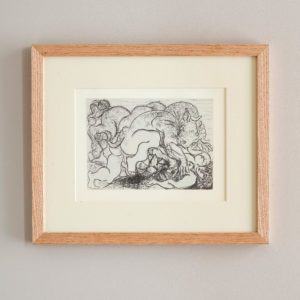
Picasso, Vollard Suite, 1956. Paris, May 23, 1933.
£175 eachPicasso, Vollard Suite, 1956. Paris, May 23, 1933.
Lithographs, published 1956 based on Picasso's work, produced from 1930-1937 for the art dealer Ambroise Vollard. Framed in plain oak with cream mounts. Paris, May 23, 1933. Minotaur Assaulting a Girl.£175 each -
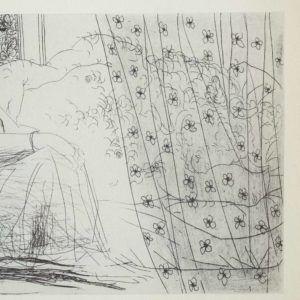
Picasso, Vollard Suite, 1956. Paris, May 18, 1933.
£175 eachPicasso, Vollard Suite, 1956. Paris, May 18, 1933.
Lithographs, published 1956 based on Picasso's work, produced from 1930-1937 for the art dealer Ambroise Vollard. Framed in plain oak with cream mounts. Paris, May 18, 1933. Girl Seated by Sleeping Minotaur.£175 each -
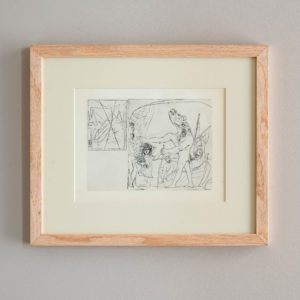
Picasso, Vollard Suite, 1956. Boisgeloup. September 22, 1934.
£175 eachPicasso, Vollard Suite, 1956. Boisgeloup. September 22, 1934.
Lithographs, published 1956 based on Picasso's work, produced from 1930-1937 for the art dealer Ambroise Vollard. Framed in plain oak with cream mounts. Boisegeloup. September 22, 1934. Blind Minotaur Led by Girl with Bouquet of Wild Flowers.£175 each -
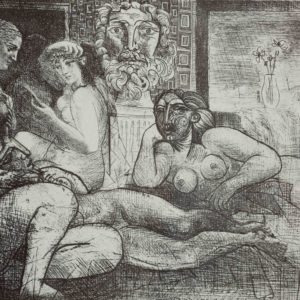
Picasso, Vollard Suite, 1956. Paris, March 10, 1934
£175 eachPicasso, Vollard Suite, 1956. Paris, March 10, 1934
Lithographs, published 1956 based on Picasso's work, produced from 1930-1937 for the art dealer Ambroise Vollard. Framed in plain oak with cream mounts. Paris, March 10, 1934. Four Models and a Sculptured Head.£175 each -
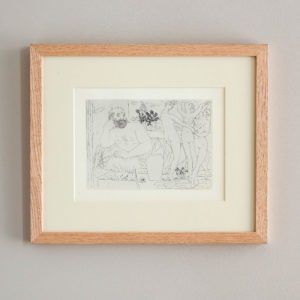
Picasso, Vollard Suite, 1956. Paris, March 2, 1934
£175 eachPicasso, Vollard Suite, 1956. Paris, March 2, 1934
Lithographs, published 1956 based on Picasso's work, produced from 1930-1937 for the art dealer Ambroise Vollard. Framed in plain oak with cream mounts. Paris, March 2, 1934. Sculptor and Statue of Three Female Dancers£175 each -
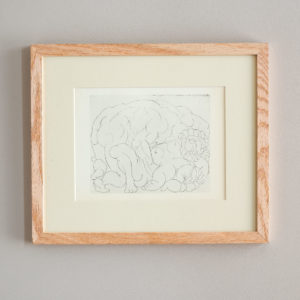
Picasso, Vollard Suite, 1956. Boisgeloup, April 22, 1933.
£175 eachPicasso, Vollard Suite, 1956. Boisgeloup, April 22, 1933.
Lithographs, published 1956 based on Picasso's work, produced from 1930-1937 for the art dealer Ambroise Vollard. Framed in plain oak with cream mounts. Boisegeloup, April 22, 1933. Embrace.£175 each -
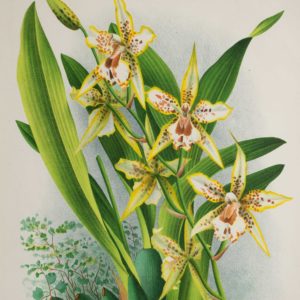
Linden Botanicals, Odontoglossum Duvivieranum,
£175 eachLinden Botanicals, Odontoglossum Duvivieranum,
L’Illustration Horticole, was a monthly horticultural review, founded in 1854 in Ghent, Belgium, by Ambroise Verschaffelt, a nurseryman who specialised in new plant introductions from South America. The lavish illustrations were produced by some of the very best botanical artists and lithographers – A. Goosens, P. De Pannemaeker and J. Goffart. The L’Illustration Horticole although founded by Jean Jules Linden (1817 – 1898) became a collaborative effort of many great horticulturists and field botanists of the day. Jean Linden in his own right was a renowned orchid grower and collector. Each monthly edition featured chromolithograph of botanical prints. Plants such as orchids, camellias, roses and leafy plants such as ferns and palm trees were represented. The magazine’s scope included pictures, descriptions, the history and culture of “the most remarkable plants,” new introductions, horticultural history, botanical expeditions, and accounts of the major expositions and of new works on botany and horticulture as well as garden descriptions and layouts.£175 each -
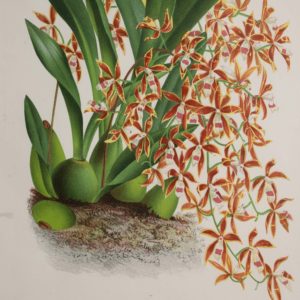
Linden Botanicals, Odontoglossum Constricutum,
£175 eachLinden Botanicals, Odontoglossum Constricutum,
L’Illustration Horticole, was a monthly horticultural review, founded in 1854 in Ghent, Belgium, by Ambroise Verschaffelt, a nurseryman who specialised in new plant introductions from South America. The lavish illustrations were produced by some of the very best botanical artists and lithographers – A. Goosens, P. De Pannemaeker and J. Goffart. The L’Illustration Horticole although founded by Jean Jules Linden (1817 – 1898) became a collaborative effort of many great horticulturists and field botanists of the day. Jean Linden in his own right was a renowned orchid grower and collector. Each monthly edition featured chromolithograph of botanical prints. Plants such as orchids, camellias, roses and leafy plants such as ferns and palm trees were represented. The magazine’s scope included pictures, descriptions, the history and culture of “the most remarkable plants,” new introductions, horticultural history, botanical expeditions, and accounts of the major expositions and of new works on botany and horticulture as well as garden descriptions and layouts.£175 each -
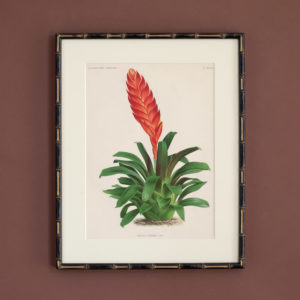
Linden Botanicals, Vriesea Fulgida,
£175 eachLinden Botanicals, Vriesea Fulgida,
L’Illustration Horticole, was a monthly horticultural review, founded in 1854 in Ghent, Belgium, by Ambroise Verschaffelt, a nurseryman who specialised in new plant introductions from South America. The lavish illustrations were produced by some of the very best botanical artists and lithographers – A. Goosens, P. De Pannemaeker and J. Goffart. The L’Illustration Horticole although founded by Jean Jules Linden (1817 – 1898) became a collaborative effort of many great horticulturists and field botanists of the day. Jean Linden in his own right was a renowned orchid grower and collector. Each monthly edition featured chromolithograph of botanical prints. Plants such as orchids, camellias, roses and leafy plants such as ferns and palm trees were represented. The magazine’s scope included pictures, descriptions, the history and culture of “the most remarkable plants,” new introductions, horticultural history, botanical expeditions, and accounts of the major expositions and of new works on botany and horticulture as well as garden descriptions and layouts.£175 each -
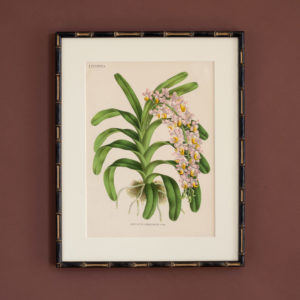
Linden Botanicals, Aerides Reichenbachi,
£175 eachLinden Botanicals, Aerides Reichenbachi,
L’Illustration Horticole, was a monthly horticultural review, founded in 1854 in Ghent, Belgium, by Ambroise Verschaffelt, a nurseryman who specialised in new plant introductions from South America. The lavish illustrations were produced by some of the very best botanical artists and lithographers – A. Goosens, P. De Pannemaeker and J. Goffart. The L’Illustration Horticole although founded by Jean Jules Linden (1817 – 1898) became a collaborative effort of many great horticulturists and field botanists of the day. Jean Linden in his own right was a renowned orchid grower and collector. Each monthly edition featured chromolithograph of botanical prints. Plants such as orchids, camellias, roses and leafy plants such as ferns and palm trees were represented. The magazine’s scope included pictures, descriptions, the history and culture of “the most remarkable plants,” new introductions, horticultural history, botanical expeditions, and accounts of the major expositions and of new works on botany and horticulture as well as garden descriptions and layouts.£175 each -
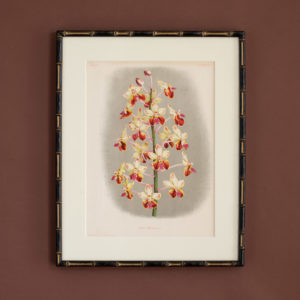
Linden Botanicals, Vanda Superba,
£175 eachLinden Botanicals, Vanda Superba,
L’Illustration Horticole, was a monthly horticultural review, founded in 1854 in Ghent, Belgium, by Ambroise Verschaffelt, a nurseryman who specialised in new plant introductions from South America. The lavish illustrations were produced by some of the very best botanical artists and lithographers – A. Goosens, P. De Pannemaeker and J. Goffart. The L’Illustration Horticole although founded by Jean Jules Linden (1817 – 1898) became a collaborative effort of many great horticulturists and field botanists of the day. Jean Linden in his own right was a renowned orchid grower and collector. Each monthly edition featured chromolithograph of botanical prints. Plants such as orchids, camellias, roses and leafy plants such as ferns and palm trees were represented. The magazine’s scope included pictures, descriptions, the history and culture of “the most remarkable plants,” new introductions, horticultural history, botanical expeditions, and accounts of the major expositions and of new works on botany and horticulture as well as garden descriptions and layouts.£175 each -
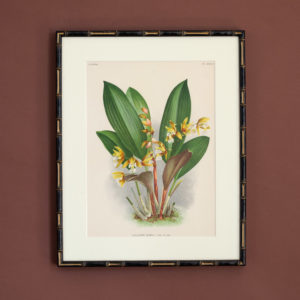
Linden Botanicals, Coelogyne Lurida,
£175 eachLinden Botanicals, Coelogyne Lurida,
L’Illustration Horticole, was a monthly horticultural review, founded in 1854 in Ghent, Belgium, by Ambroise Verschaffelt, a nurseryman who specialised in new plant introductions from South America. The lavish illustrations were produced by some of the very best botanical artists and lithographers – A. Goosens, P. De Pannemaeker and J. Goffart. The L’Illustration Horticole although founded by Jean Jules Linden (1817 – 1898) became a collaborative effort of many great horticulturists and field botanists of the day. Jean Linden in his own right was a renowned orchid grower and collector. Each monthly edition featured chromolithograph of botanical prints. Plants such as orchids, camellias, roses and leafy plants such as ferns and palm trees were represented. The magazine’s scope included pictures, descriptions, the history and culture of “the most remarkable plants,” new introductions, horticultural history, botanical expeditions, and accounts of the major expositions and of new works on botany and horticulture as well as garden descriptions and layouts.£175 each -
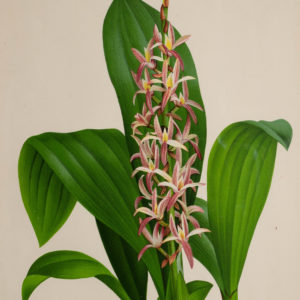
Linden Botanicals, Eria Striolata,
£175 eachLinden Botanicals, Eria Striolata,
L’Illustration Horticole, was a monthly horticultural review, founded in 1854 in Ghent, Belgium, by Ambroise Verschaffelt, a nurseryman who specialised in new plant introductions from South America. The lavish illustrations were produced by some of the very best botanical artists and lithographers – A. Goosens, P. De Pannemaeker and J. Goffart. The L’Illustration Horticole although founded by Jean Jules Linden (1817 – 1898) became a collaborative effort of many great horticulturists and field botanists of the day. Jean Linden in his own right was a renowned orchid grower and collector. Each monthly edition featured chromolithograph of botanical prints. Plants such as orchids, camellias, roses and leafy plants such as ferns and palm trees were represented. The magazine’s scope included pictures, descriptions, the history and culture of “the most remarkable plants,” new introductions, horticultural history, botanical expeditions, and accounts of the major expositions and of new works on botany and horticulture as well as garden descriptions and layouts.£175 each -
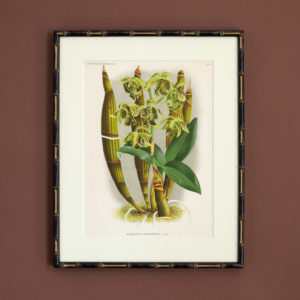
Linden Botanicals, Dendiobium Macrophyllum,
£175 eachLinden Botanicals, Dendiobium Macrophyllum,
L’Illustration Horticole, was a monthly horticultural review, founded in 1854 in Ghent, Belgium, by Ambroise Verschaffelt, a nurseryman who specialised in new plant introductions from South America. The lavish illustrations were produced by some of the very best botanical artists and lithographers – A. Goosens, P. De Pannemaeker and J. Goffart. The L’Illustration Horticole although founded by Jean Jules Linden (1817 – 1898) became a collaborative effort of many great horticulturists and field botanists of the day. Jean Linden in his own right was a renowned orchid grower and collector. Each monthly edition featured chromolithograph of botanical prints. Plants such as orchids, camellias, roses and leafy plants such as ferns and palm trees were represented. The magazine’s scope included pictures, descriptions, the history and culture of “the most remarkable plants,” new introductions, horticultural history, botanical expeditions, and accounts of the major expositions and of new works on botany and horticulture as well as garden descriptions and layouts.£175 each -

Linden Botanicals, Rhynchostylis Retusa,
£175 eachLinden Botanicals, Rhynchostylis Retusa,
L’Illustration Horticole, was a monthly horticultural review, founded in 1854 in Ghent, Belgium, by Ambroise Verschaffelt, a nurseryman who specialised in new plant introductions from South America. The lavish illustrations were produced by some of the very best botanical artists and lithographers – A. Goosens, P. De Pannemaeker and J. Goffart. The L’Illustration Horticole although founded by Jean Jules Linden (1817 – 1898) became a collaborative effort of many great horticulturists and field botanists of the day. Jean Linden in his own right was a renowned orchid grower and collector. Each monthly edition featured chromolithograph of botanical prints. Plants such as orchids, camellias, roses and leafy plants such as ferns and palm trees were represented. The magazine’s scope included pictures, descriptions, the history and culture of “the most remarkable plants,” new introductions, horticultural history, botanical expeditions, and accounts of the major expositions and of new works on botany and horticulture as well as garden descriptions and layouts.£175 each -
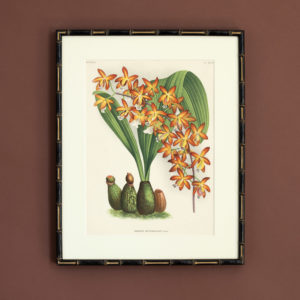
Linden Botanicals, Eriopsis Rutidobulbon,
£175 eachLinden Botanicals, Eriopsis Rutidobulbon,
L’Illustration Horticole, was a monthly horticultural review, founded in 1854 in Ghent, Belgium, by Ambroise Verschaffelt, a nurseryman who specialised in new plant introductions from South America. The lavish illustrations were produced by some of the very best botanical artists and lithographers – A. Goosens, P. De Pannemaeker and J. Goffart. The L’Illustration Horticole although founded by Jean Jules Linden (1817 – 1898) became a collaborative effort of many great horticulturists and field botanists of the day. Jean Linden in his own right was a renowned orchid grower and collector. Each monthly edition featured chromolithograph of botanical prints. Plants such as orchids, camellias, roses and leafy plants such as ferns and palm trees were represented. The magazine’s scope included pictures, descriptions, the history and culture of “the most remarkable plants,” new introductions, horticultural history, botanical expeditions, and accounts of the major expositions and of new works on botany and horticulture as well as garden descriptions and layouts.£175 each -
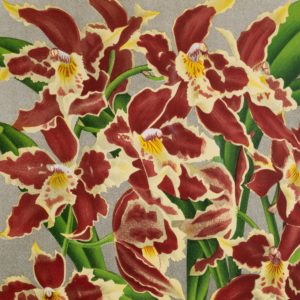
Linden Botanicals, Odontoglossum Crispum,
£175 eachLinden Botanicals, Odontoglossum Crispum,
L’Illustration Horticole, was a monthly horticultural review, founded in 1854 in Ghent, Belgium, by Ambroise Verschaffelt, a nurseryman who specialised in new plant introductions from South America. The lavish illustrations were produced by some of the very best botanical artists and lithographers – A. Goosens, P. De Pannemaeker and J. Goffart. The L’Illustration Horticole although founded by Jean Jules Linden (1817 – 1898) became a collaborative effort of many great horticulturists and field botanists of the day. Jean Linden in his own right was a renowned orchid grower and collector. Each monthly edition featured chromolithograph of botanical prints. Plants such as orchids, camellias, roses and leafy plants such as ferns and palm trees were represented. The magazine’s scope included pictures, descriptions, the history and culture of “the most remarkable plants,” new introductions, horticultural history, botanical expeditions, and accounts of the major expositions and of new works on botany and horticulture as well as garden descriptions and layouts.£175 each -
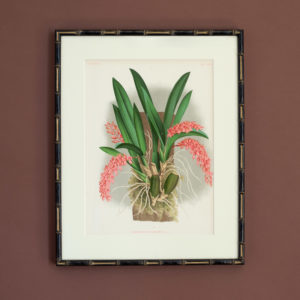
Linden Botanicals, Rodriguezia Bungerothi,
£175 eachLinden Botanicals, Rodriguezia Bungerothi,
L’Illustration Horticole, was a monthly horticultural review, founded in 1854 in Ghent, Belgium, by Ambroise Verschaffelt, a nurseryman who specialised in new plant introductions from South America. The lavish illustrations were produced by some of the very best botanical artists and lithographers – A. Goosens, P. De Pannemaeker and J. Goffart. The L’Illustration Horticole although founded by Jean Jules Linden (1817 – 1898) became a collaborative effort of many great horticulturists and field botanists of the day. Jean Linden in his own right was a renowned orchid grower and collector. Each monthly edition featured chromolithograph of botanical prints. Plants such as orchids, camellias, roses and leafy plants such as ferns and palm trees were represented. The magazine’s scope included pictures, descriptions, the history and culture of “the most remarkable plants,” new introductions, horticultural history, botanical expeditions, and accounts of the major expositions and of new works on botany and horticulture as well as garden descriptions and layouts.£175 each -
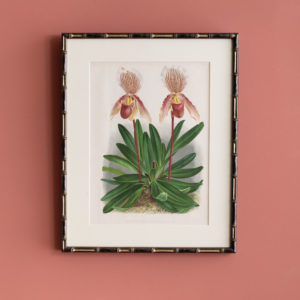
Linden Botanicals,
£175 eachLinden Botanicals,
L’Illustration Horticole, was a monthly horticultural review, founded in 1854 in Ghent, Belgium, by Ambroise Verschaffelt, a nurseryman who specialised in new plant introductions from South America. The lavish illustrations were produced by some of the very best botanical artists and lithographers – A. Goosens, P. De Pannemaeker and J. Goffart. The L’Illustration Horticole although founded by Jean Jules Linden (1817 – 1898) became a collaborative effort of many great horticulturists and field botanists of the day. Jean Linden in his own right was a renowned orchid grower and collector. Each monthly edition featured chromolithograph of botanical prints. Plants such as orchids, camellias, roses and leafy plants such as ferns and palm trees were represented. The magazine’s scope included pictures, descriptions, the history and culture of “the most remarkable plants,” new introductions, horticultural history, botanical expeditions, and accounts of the major expositions and of new works on botany and horticulture as well as garden descriptions and layouts.£175 each -
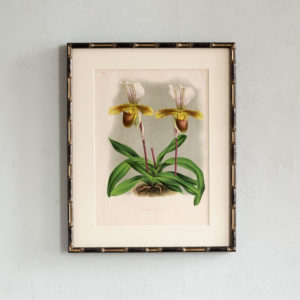
Linden Botanicals
£175 eachLinden Botanicals
L’Illustration Horticole, was a monthly horticultural review, founded in 1854 in Ghent, Belgium, by Ambroise Verschaffelt, a nurseryman who specialised in new plant introductions from South America. The lavish illustrations were produced by some of the very best botanical artists and lithographers – A. Goosens, P. De Pannemaeker and J. Goffart. The L’Illustration Horticole although founded by Jean Jules Linden (1817 – 1898) became a collaborative effort of many great horticulturists and field botanists of the day. Jean Linden in his own right was a renowned orchid grower and collector. Each monthly edition featured chromolithograph of botanical prints. Plants such as orchids, camellias, roses and leafy plants such as ferns and palm trees were represented. The magazine’s scope included pictures, descriptions, the history and culture of “the most remarkable plants,” new introductions, horticultural history, botanical expeditions, and accounts of the major expositions and of new works on botany and horticulture as well as garden descriptions and layouts.£175 each -
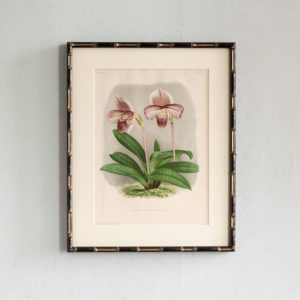
Linden Botanicals
£175 eachLinden Botanicals
L’Illustration Horticole, was a monthly horticultural review, founded in 1854 in Ghent, Belgium, by Ambroise Verschaffelt, a nurseryman who specialised in new plant introductions from South America. The lavish illustrations were produced by some of the very best botanical artists and lithographers – A. Goosens, P. De Pannemaeker and J. Goffart. The L’Illustration Horticole although founded by Jean Jules Linden (1817 – 1898) became a collaborative effort of many great horticulturists and field botanists of the day. Jean Linden in his own right was a renowned orchid grower and collector. Each monthly edition featured chromolithograph of botanical prints. Plants such as orchids, camellias, roses and leafy plants such as ferns and palm trees were represented. The magazine’s scope included pictures, descriptions, the history and culture of “the most remarkable plants,” new introductions, horticultural history, botanical expeditions, and accounts of the major expositions and of new works on botany and horticulture as well as garden descriptions and layouts.£175 each -
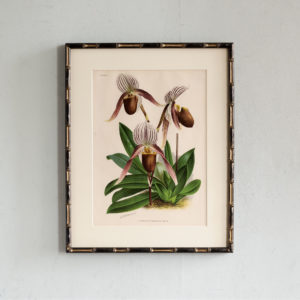
Linden Botanicals
£175 eachLinden Botanicals
L’Illustration Horticole, was a monthly horticultural review, founded in 1854 in Ghent, Belgium, by Ambroise Verschaffelt, a nurseryman who specialised in new plant introductions from South America. The lavish illustrations were produced by some of the very best botanical artists and lithographers – A. Goosens, P. De Pannemaeker and J. Goffart. The L’Illustration Horticole although founded by Jean Jules Linden (1817 – 1898) became a collaborative effort of many great horticulturists and field botanists of the day. Jean Linden in his own right was a renowned orchid grower and collector. Each monthly edition featured chromolithograph of botanical prints. Plants such as orchids, camellias, roses and leafy plants such as ferns and palm trees were represented. The magazine’s scope included pictures, descriptions, the history and culture of “the most remarkable plants,” new introductions, horticultural history, botanical expeditions, and accounts of the major expositions and of new works on botany and horticulture as well as garden descriptions and layouts.£175 each -
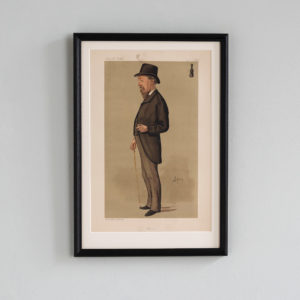
Chess,
£175Chess,
Framed chromolithograph by APE (Carlo Pellegrini) picturing Joseph Henry Blackburne, British chess master nicknamed 'The Black Death'. Despite only taking up the game at the age of 17 Blackburn became a world champion many times over and an icon of 'Romantic Chess'.£175 -
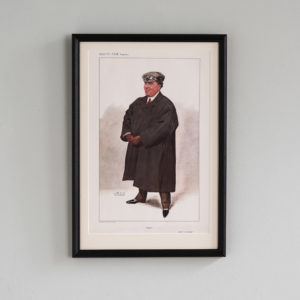
Steam
£175Steam
A framed chromolithograph by SPY (Leslie Ward) depicting Frederic Abernethy Coleman, writer, journalist, military historian & motoring pioneer. He popularised the White Steam Car in England and was a fierce opponent of the 'petrol car brigade' preferring and championing steam powered motorcars. Steam powered cars had the ascendancy in early British motoring, particularly in hill-climbs until they were banned from competition by advocates of the petrol engine,£175 -
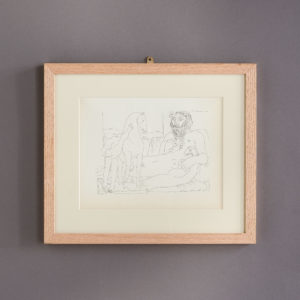
Picasso, Vollard Suite, 1956,
£175 eachPicasso, Vollard Suite, 1956,
Lithographs, published 1956 based on Picasso's work, produced from 1930-1937 for the art dealer Ambroise Vollard. Framed in plain oak.£175 each -
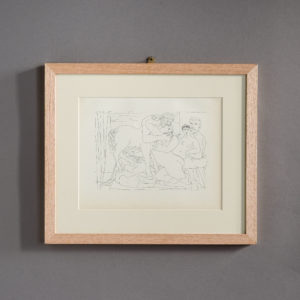
Picasso, Vollard Suite, 1956,
£175 eachPicasso, Vollard Suite, 1956,
Lithographs, published 1956 based on Picasso's work, produced from 1930-1937 for the art dealer Ambroise Vollard. Framed in plain oak.£175 each -
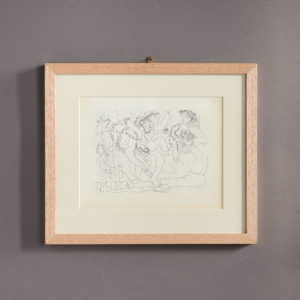
Picasso, Vollard Suite, 1956,
£175 eachPicasso, Vollard Suite, 1956,
Lithographs, published 1956 based on Picasso's work, produced from 1930-1937 for the art dealer Ambroise Vollard. Framed in plain oak.£175 each -
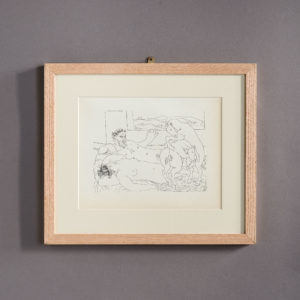
Picasso, Vollard Suite, 1956,
£175 eachPicasso, Vollard Suite, 1956,
Lithographs, published 1956 based on Picasso's work, produced from 1930-1937 for the art dealer Ambroise Vollard. Framed in plain oak.£175 each -
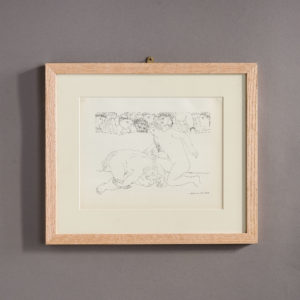
Picasso, Vollard Suite, 1956,
£175 eachPicasso, Vollard Suite, 1956,
Lithographs, published 1956 based on Picasso's work, produced from 1930-1937 for the art dealer Ambroise Vollard. Framed in plain oak.£175 each -
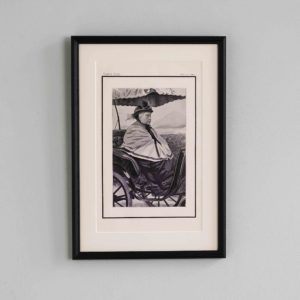
Her Majesty the Queen Empress,
£170 -
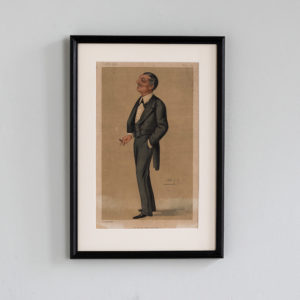
In His Military Capacity,
£170In His Military Capacity,
Framed Chromolithograph by SPY (Leslie Ward) depicting Mr Montagu Williams QC, teacher, British Army officer, actor, playwright, barrister and magistrate. His succesful defence of Mr John Young in his manslaughter trial, after the death of an opponent in the boxing ring, established a legal precedent around the sport.£170 -
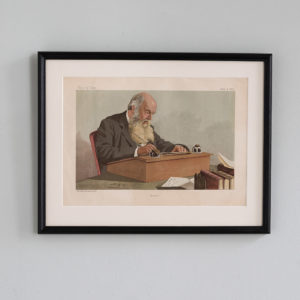
Balliol,
£170Balliol,
Framed Chromolithograph by Spy (Leslie Ward) depicting Edward Caird FRSA FBA. Scottish philosopher on the latter part of the 19th century, Caird is considered one of the fathers of the British Idealist school, a philosophical movement that was influential in Britain from the mid-nineteenth century until its overthrow by the Analytic Philosophy associated with Bertrand Russell. He served as Master of Balliol college until 1907.£170 -
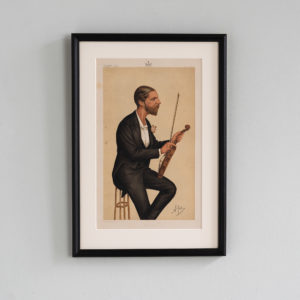
First Violin,
£170First Violin,
Framed Chromolithograph by Spy (Leslie Ward) picturing HRH The Duke of Edinburgh, Alfred Ernest Albert, later Duke of Saxe Coburg and Gotha. The second son of Victoria and Albert he joined the Royal Navy at 14, he rose through the ranks to attain the position of Admiral of the Fleet by 1893 having served as Cadet, Lieutenant and Captain of HMS Galatea which he commanded in the Pacific Ocean. He commanded both the Channel fleet and, later, the Mediterranean Fleet from his flagship HMS Alexandra. The Duke survived an assassination attempt while visiting Sydney Australia and went on to marry a Grand Duchess of Russia. Alfred was a musical enthusiast and took a leading role in the establishment of the the Royal College of Music in 1882. He was a particularly keen violinist although his playing was not of the first quality. After a dinner party given by one of his brothers where he was persuaded to play Sir Henry Ponsonby would write: 'Fiddle out of tune and noise abominable'£170
Featured Items
-
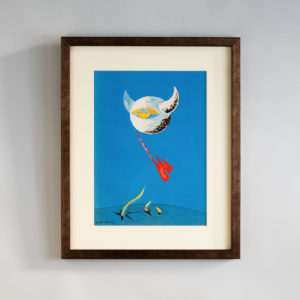
The Moon by André Masson, Verve Vol. 1 / No. 2.
£600The Moon by André Masson, Verve Vol. 1 / No. 2.
The Verve Review was a purposefully luxurious. It ran from 1937 to 1960, but with only 38 editions available, due to the high degree of design and editorial work dedicated to each issue. Each edition contained unique lithographic prints, commissioned by the editor, and each cover a double-page lithograph elaborated by one of the artists contained within. It was the brainchild of its editor Stratis Eleftheriades, a Greek National who moved to Paris in the early thirties to take part in the growing Modernist movement, writing under the name of Teriade.£600 -
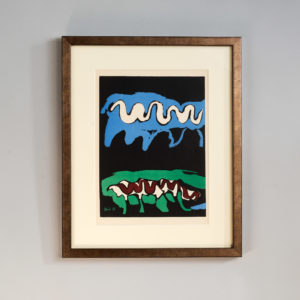
The Four Elements, Earth by Francisco Bores, Verve Vol. 1 / No. 1.
£600The Four Elements, Earth by Francisco Bores, Verve Vol. 1 / No. 1.
The Verve Review was a purposefully luxurious. It ran from 1937 to 1960, but with only 38 editions available, due to the high degree of design and editorial work dedicated to each issue. Each edition contained unique lithographic prints, commissioned by the editor, and each cover a double-page lithograph elaborated by one of the artists contained within. It was the brainchild of its editor Stratis Eleftheriades, a Greek National who moved to Paris in the early thirties to take part in the growing Modernist movement, writing under the name of Teriade.£600 -
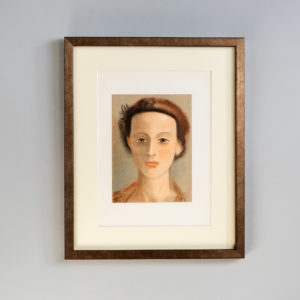
Portrait by Andre Derain, Verve Vol 2 / No. 5-6.
£800Portrait by Andre Derain, Verve Vol 2 / No. 5-6.
The Verve Review was a purposefully luxurious. It ran from 1937 to 1960, but with only 38 editions available, due to the high degree of design and editorial work dedicated to each issue. Each edition contained unique lithographic prints, commissioned by the editor, and each cover a double-page lithograph elaborated by one of the artists contained within. It was the brainchild of its editor Stratis Eleftheriades, a Greek National who moved to Paris in the early thirties to take part in the growing Modernist movement, writing under the name of Teriade.£800 -
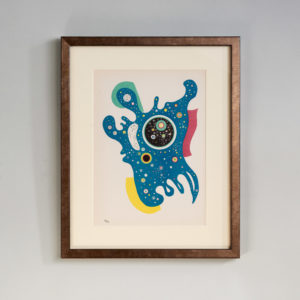
Stars by Wassily Kandinsky, Verve Vol. 1 / No. 2.
£800Stars by Wassily Kandinsky, Verve Vol. 1 / No. 2.
The Verve Review was a purposefully luxurious. It ran from 1937 to 1960, but with only 38 editions available, due to the high degree of design and editorial work dedicated to each issue. Each edition contained unique lithographic prints, commissioned by the editor, and each cover a double-page lithograph elaborated by one of the artists contained within. It was the brainchild of its editor Stratis Eleftheriades, a Greek National who moved to Paris in the early thirties to take part in the growing Modernist movement, writing under the name of Teriade.£800

